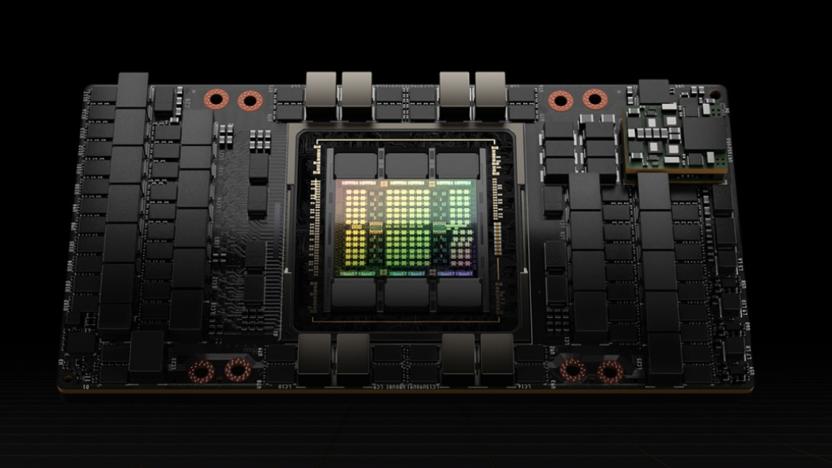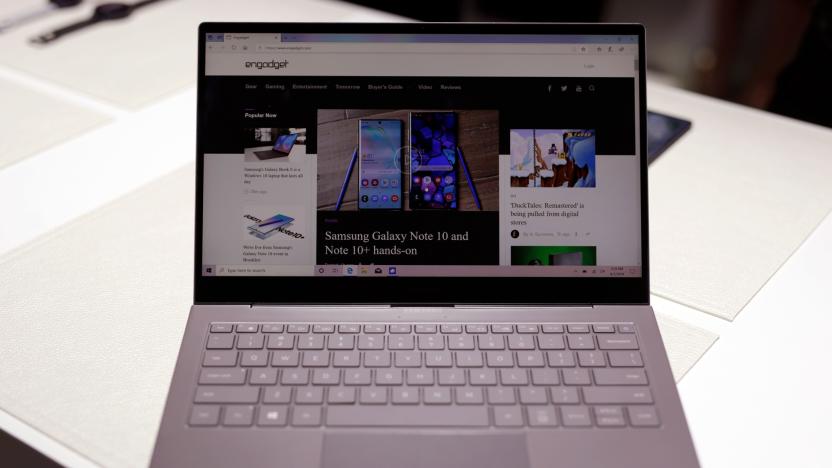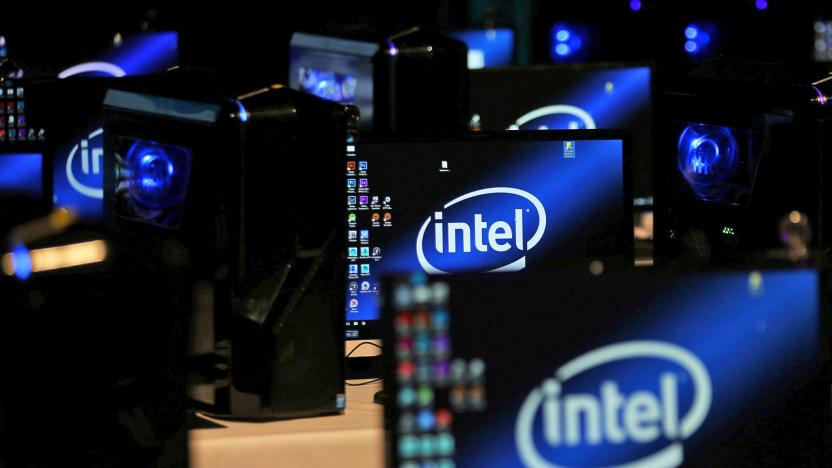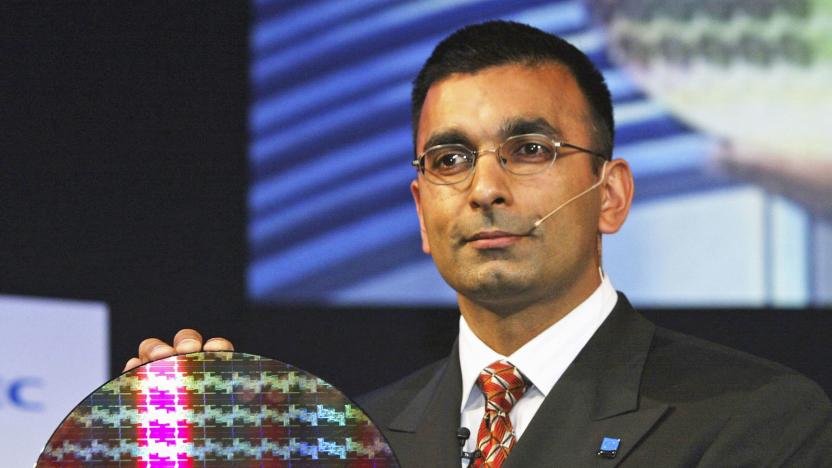x86
Latest

NVIDIA says its new H100 datacenter GPU is up to six times faster than its last
At GTC 2022, CEO Jensen Huang unveiled the Grace CPU Superchip, the first discrete CPU NVIDIA plans to release as part of its Grace lineup.

NVIDIA's Grace, its first datacenter CPU, is another major threat to Intel
Just like Apple did with its M1 chip, NVIDIA is taking on Intel directly with its own Arm-based CPU.

Samsung will reportedly release an Exynos laptop with AMD graphics this year
According to a new report out of Korea, Samsung will release a Windows 10 laptop later this year that will feature an Exynos chipset that integrates an AMD GPU.

Microsoft's Pluton chip upgrades the hardware security of Windows PCs
The next Windows PC you buy could come with an advanced security co-processor that will protect your data from being stolen by hackers.

Do Apple's new Mac chips mean ARM has won?
For the latest episode of our explainer show Upscaled, we dive into the history of the RISC architecture. With Apple dropping Intel for its own RISC-based CPUs, this will be the first time in decades we've seen a company try to produce high-end RISC processors.

IBM's tiniest computer is smaller than a grain of rock salt
IBM has unveiled a computer that's smaller than a grain of rock salt. It has the power of an x86 chip from 1990, according to Mashable, and its transistor count is in the "several hundred" thousand range. That's a far cry from the power of Watson or the company's quantum computing experiments, but you gotta start somewhere. Oh, right: it also works as a data source for blockchain. Meaning, it'll apparently sort provided data with AI and can detect fraud and pilfering, in addition to tracking shipments.

Fix for Intel's massive CPU security flaw might slow down your PC
Intel is grappling with another major security flaw in its processors... and this time, the cost of fixing it may be very steep. Researchers have discovered a design vulnerability in Intel CPUs over the past decade that covers the ability of ordinary programs to determine the content or layout of protected kernel memory (i.e. areas reserved just for the operating system). While the details appear to be under embargo for now, the fix is to completely separate the kernel memory from those ordinary processes. That could carry a significant speed hit, since it requires switching between two memory address spaces every time there's a system call or a hardware interrupt request.

Intel ends its dreams of replacing the x86 chip in your PC
When Intel launched its first Itanium processor in 2001, it had very high hopes: the 64-bit chip was supposed to do nothing less than kill off the x86 architecture that had dominated PCs for over two decades. Things didn't quite pan out that way, however, and Intel is officially calling it quits. The company tells PCWorld that its just-shipping Itanium 9700-series processors will be the last models in the family. HPE, the enterprise company resulting from the split of Itanium co-creator HP, will be the last major customer -- its extra-reliable Integrity i6 servers are getting the upgraded hardware, but you won't hear much from anyone else.

Windows 10 will seamlessly run legacy apps on ARM
As we learned last month, ARM-powered Windows 10 devices should start hitting the market by the end of 2017. Unlike previous mobile-friendly versions of Windows though, Microsoft is working hard to make sure the ARM release will be able to properly support full-fledge desktop apps, rather than the mish-mash of apps that showed up in Windows RT and devices like the Surface 2. At the Build 2017 conference this week, Microsoft showed off the new seamless experience by downloading, installing and running x86 Win32 applications on an ARM machine.

Raspberry Pi releases an OS to breathe new life into old PCs
The Raspberry Pi Foundation has released an experimental version of its Linux-based Pixel OS for Windows and Mac PCs. The OS, originally designed to run only on the Raspberry Pi hobby board, comes with the Chromium web browser and a suite of productivity and coding tools. "We asked ourselves one simple question: If we like Pixel so much, why ask people to buy Raspberry Pi hardware in order to run it?" founder Eben Upton wrote in a blog post.

Intel to manufacture ARM chips in a bid for mobile domination
Intel is flexing its manufacturing muscle in an attempt to get inside your next phone. To do that, it has entered a licensing deal with ARM, according to a report from Bloomberg. Without this license, excess manufacturing space goes to waste. But with it, Intel can make processors for Apple, Qualcomm and Samsung -- the biggest players in smartphones. This gives Intel a much-needed boost in the mobile space that it couldn't achieve on its own.

Jury awards HP $3 billion in damages from Oracle
In yet another legal tussle between HP and Oracle, a jury has decided to award HP $3 billion in damages. The case stems from Oracle's decision to stop developing software for HP's Intel Itanium-powered servers in 2011, which HP says is a breach of contract between the two companies. Oracle's argument has been that the Itanium processor was nearing end of life and it didn't think there was a contract requiring it to support the hardware indefinitely.

Console OS will let you run Android on a Windows PC or tablet
Toggling between Windows and Android on a single device? That sounds desirable enough maybe, especially the way Intel describes it, but the quest for a practical mixture of green and blue has had its hiccups. (And that's putting it mildly.) A new project has just arrived on Kickstarter, however, which takes a slightly different tack. It's called Console OS, and it's based on the premise that easy-to-use dual OS's don't need to be baked in at the factory. Currently under development by the same people who brought us the similarly-themed iConsole.tv, this fork of Android 4.4 is designed to run as either a secondary or standalone OS. It claims to be equally at home in touch-based or mouse n' keyboard environments, with compatibility promised for a bunch of recent devices (including Dell's Venue 8 Pro, Lenovo's Miix 2 and Intel's NUC). What's more, since Console OS runs natively on Intel's x86 architecture, it also promises better performance than any virtualized or emulated solution.

AMD plays both sides of the CPU wars with chips that use the same socket
Typically, you can't reuse many parts when you switch processor technologies; if you change chips, you change the entire motherboard at the same time. That won't be true for AMD in the future, though. It's working on a common chip framework, Project Skybridge, that will let 2015-era ARM and x86 system-on-chip processors share the same pin layout. In other words, a basic motherboard design could handle both CPU types.

Microsoft's new Surface Pro 2 gets official
The Surface RT's full-fledged Pro counterpart just got an update. Today, Microsoft unveiled the follow-up to that x86 / Windows 8-compatible tablet: the Surface Pro 2 and it still comes with a stylus. According to Microsoft's claims, this new tablet boasts 50 percent more color accuracy, better graphics performance, an improved speaker setup and some speed gains -- it's purportedly 20 percent faster than the original. For those wondering, the Pro 2's display has been kept consistent with the original, which means it remains a 10.6-inch 1080p panel, and it's even been ported to the new Surface 2. Battery life has gotten a significant 75 percent boost as well thanks to the 1.6GHz Core i5 Haswell processor inside and now runs much quieter. The Surface Pro 2 can also be paired with Microsoft's new Power Cover to give the tablet 2.5x its standalone battery life or the Type Cover 2, which is now 1mm thinner and backlit. The kickstand has also been revised for the refresh, as it's now a two-stage affair, addressing the issues many users had with the old Pro's awkward angle. As for ports, Microsoft says the Surface Pro 2 is loaded up with support for three USB 2.0, one USB 3.0, mini DisplayPort, Ethernet, audio in/out and, of course, charging. The Surface Pro 2, when docked, can output up to a 3,840 x 2,160 resolution on an external display and is capable of editing 6K video, backing up the company's repeated assertion that this tablet is actually a "full power PC." Pre-orders for both of Microsoft's next-gen Surface tablets go live tomorrow, the 24th, at 8AM EST with units set to ship to 21 markets on October 22nd. Pricing for the base Surface Pro 2 (i.e., 64GB / 4GB RAM) starts at $899 (the same as the original Pro), although that retail sticker shock will climb depending on the model -- it'll be available in configurations of up to 512GB / 8GB RAM.

AMD's 2014 embedded roadmap includes dedicated graphics, gaming-friendly CPU
AMD has long signaled that embedded chips will play a major role in its future, and it's backing up that claim by providing a glance at its 2014 roadmap. The highlight is Bald Eagle, a 35-watt x86 processor designed for demanding tasks like gaming; it should include up to four Steamroller cores, and it will optionally sport on-chip Graphics Core Next video. Devices that need even more visual power will use Adelaar, a dedicated graphics chipset that includes both GCN and 2GB of built-in memory. It's reportedly fast enough to be useful for PC video cards, not just the usual set-top boxes and smart TVs. Two system-on-chip designs are also joining AMD's lineup. Hierofalcon is built with data centers in mind, and carries up to eight ARM Cortex-A57 cores; Steppe Eagle, meanwhile, is a combination of upgraded Jaguar x86 cores and GCN that should speed up AMD's low-power G-series processors. With the exception of Hierofalcon, all of the new embedded chips should be available in the first half of next year. AMD hasn't named any early customers, but its embedded silicon tends to reach products that you'd recognize. Check out the roadmap after the break.

Samsung's next Galaxy Tab will have Intel inside, says Reuters
This particular rumor has been swirling for a while already, but Reuters says its own sources are now backing it up: Samsung will switch from an ARM-based design and use Intel as the supplier of the processor inside at least one version of its next 10-inch slate, the Galaxy Tab 3 10.1. Word is that Samsung will run Android off Intel's latest x86 Atom architecture, Clover Trail+, which we've so far seen in just a handful of Android smartphones including the Lenovo K900 and ZTE Geek. By way of corroboration, Korea Times is reporting the exact same Galaxy Tab 3 rumor and has also quoted an anonymous Intel employee who claimed that the number of Atom engineers based in Korea has ballooned from six last year to as many as 50 personnel today. They're said to be working on "Samsung-related projects with a mission to customize circuits for adaptation in Samsung products" -- which certainly doesn't sound like typical Intel behavior. Korea Times specifically says that Samsung is looking to reduce its reliance on the tricky supply of its own ARM-based Exynos processors, while Intel is offering the Korean giant good prices and cooperation in order to build its mobile market share. This all tallies with the idea of Atom coming to some high volume Android products -- and it's very possible that we'll see proof of that at Computex next week.

Microsoft: No cross-platform play between Xbox One and Xbox 360
Don't expect any cross-platform play between Xbox 360 and Xbox One. That's what Microsoft Xbox UK marketing manager Harvey Eagle confirmed to Videogamer. "Because of the different architecture of the systems it's not possible. Your Xbox Live account on 360 will carry over to Xbox One. That same account will work on both platforms. The multiplayer won't," Eagle told Videogamer. The Xbox 360 is built on PowerPC architecture, while the Xbox One utilizes an x86 chipset – so no purchased games will transfer to the new system. The Xbox One was announced by Microsoft yesterday during its Redmond campus Xbox reveal event. The Xbox One is due to launch later this year. Xbox Live profiles and corresponding Achievements on Xbox 360 will carry over to Xbox One, which also bumps up the friends limit to 1,000.

x86'd: How PC architecture could push Nintendo out of the next gen
It didn't take long for console warriors, fanboys and a brutal media to take aim at Nintendo's Wii U. The fledgling system was relentlessly teased for its name (seemingly even sillier than that of its predecessor) and a list of specifications certain to be outdone by its competitors. The device's novel tablet controller stayed judgment for a short time, but it didn't last long -- a weak launch lineup, a slow operating system and software delays soured an already judgmental community. Wii U detractors eventually climbed atop their soapboxes to issue their final verdicts: Nintendo is doomed. A premature prophecy, perhaps, but one that became increasingly difficult to argue with: diminishing sales and third-party desertion set a negative tone for the Wii U's future. Dedicated fans (this editor among them) quickly fell into a defensive position, dismissing EA's abandonment of the platform with promises of Nintendo's own first-party wonders. Optimism reigns supreme. Still, with both Microsoft and Sony's cards on the table, it's clear that Nintendo is about to take another hit.

Xbox One not backwards compatible with 360 discs/XBLA purchases; Gamerscore does transfer
Microsoft's minty-fresh Xbox One will be unable to play Xbox 360 discs, nor will your multitude of Xbox Live Arcade purchases transfer to the new machine, our friends at Engadget have learned. The incompatibility is due to the fact that the Xbox One runs on x86 processor architecture, whereas the Xbox 360 ran on PowerPC. This fundamental difference in hardware architecture prevents the Xbox One from natively running Xbox 360 games, regardless of how powerful the thing may be. "We care very much about the investment people have made in Xbox 360 and will continue to support it with a pipeline of new games and new apps well into the future," a Microsoft representative told Engadget. Part of that investment will transfer, however: Your Xbox Live Gamerscore. Earlier this year, Sony also announced that its PlayStation 4 will make the jump to a processor built on the x86 platform.










